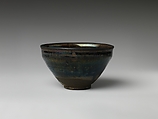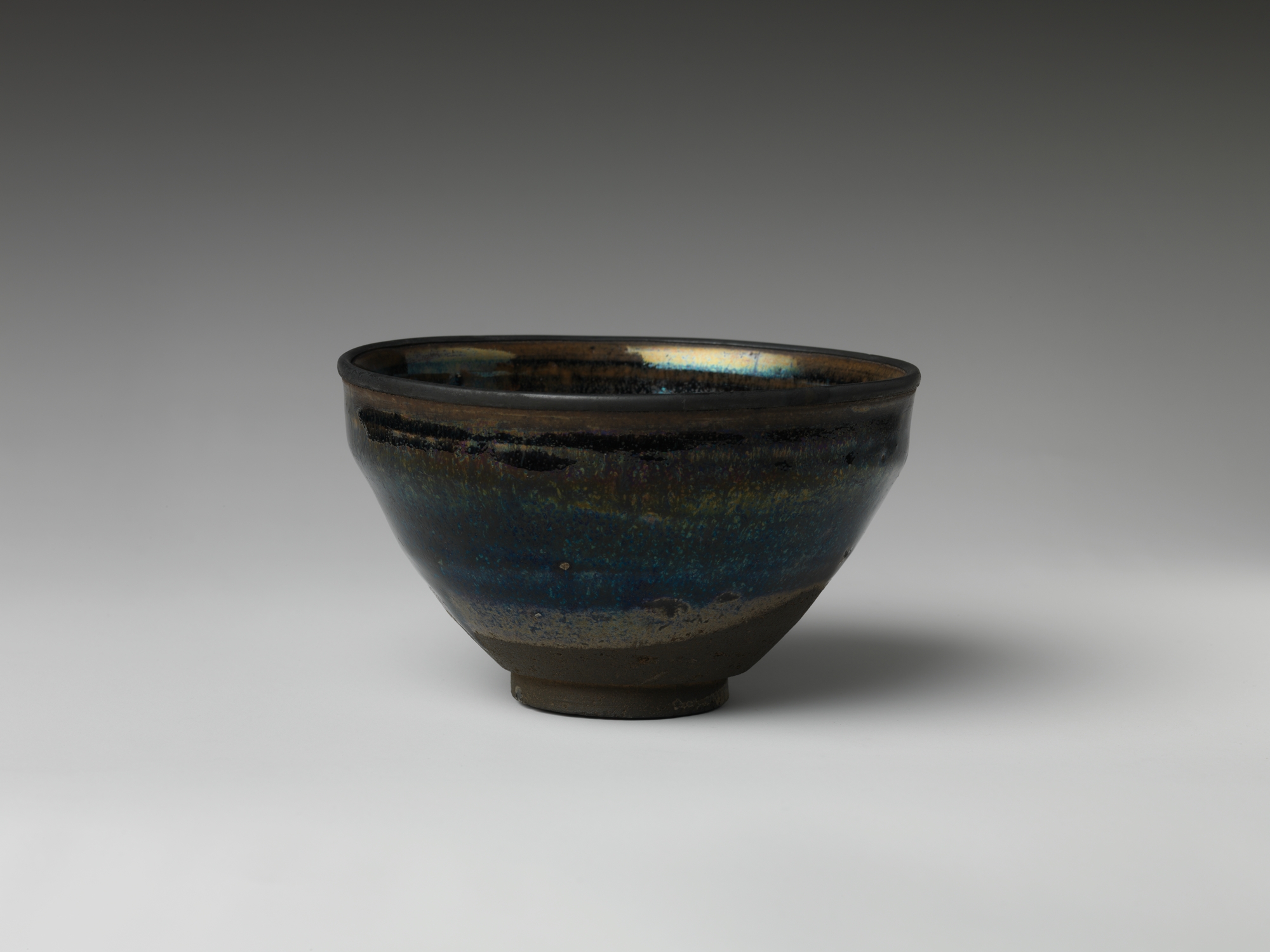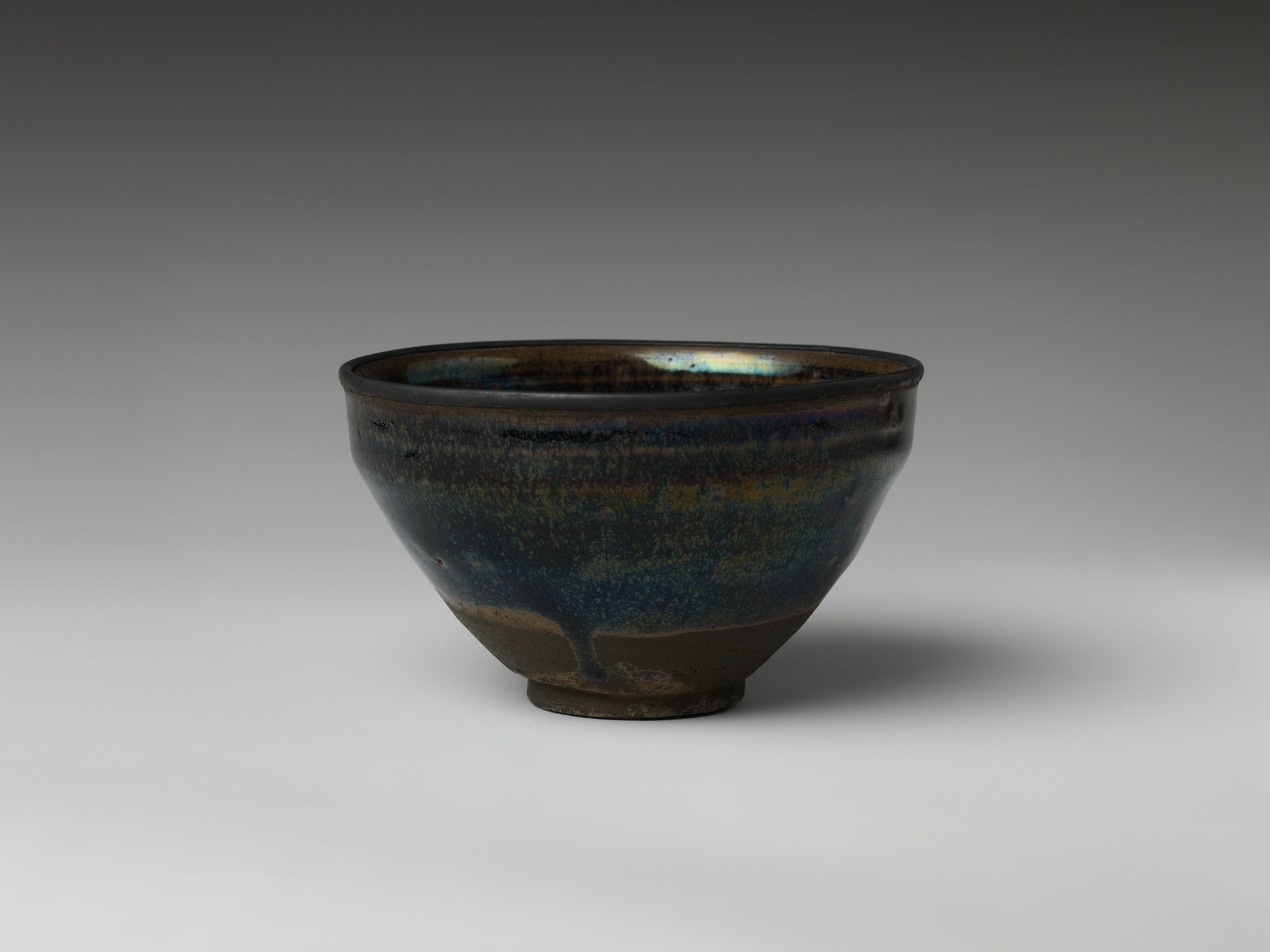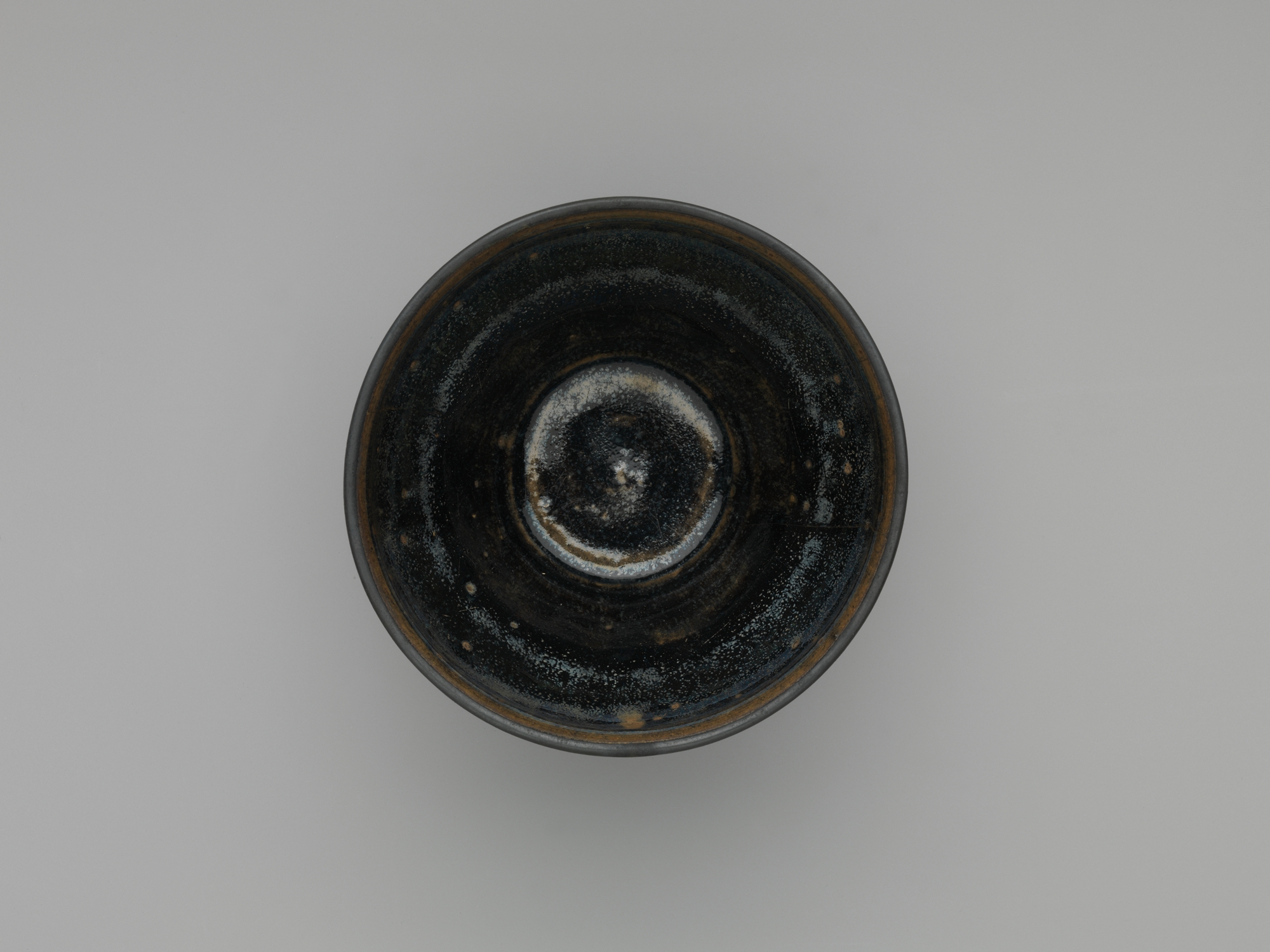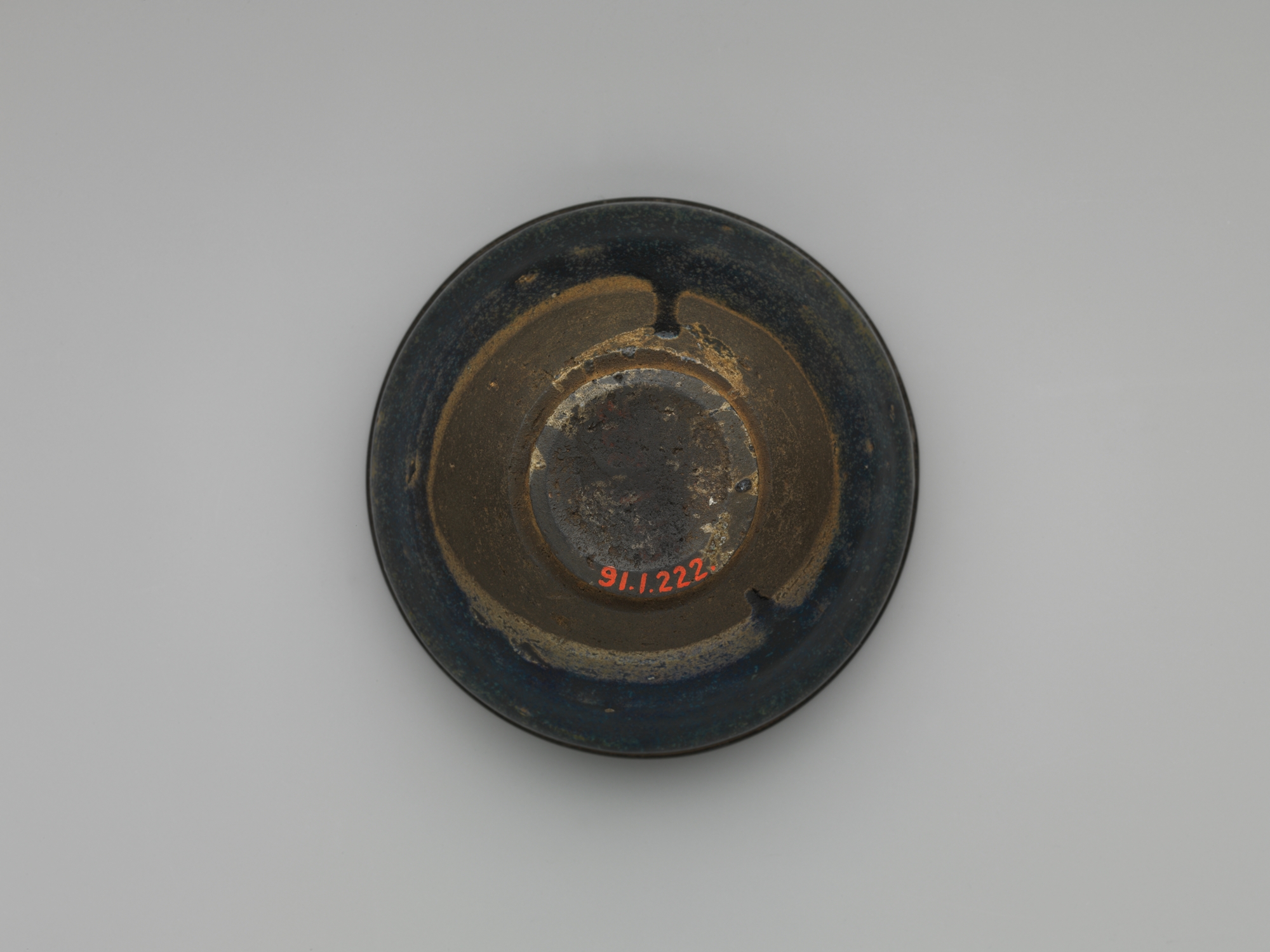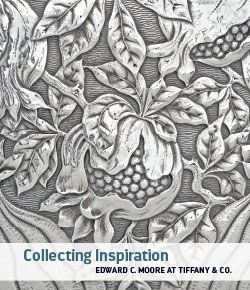Teabowl (Chawan)
This teabowl represents a classic type that originated in Song-dynasty China and was later produced in Japan. Its most prominent characteristic is the striking “hare’s-fur” glaze, named for the iridescent grayish-brown streaks resembling a thick growth of hair. Chinese teabowls of this type became highly prized in Japan, especially among Buddhist monks, during the twelfth and the thirteenth centuries. Later, similar vessels were produced in Japanese kilns, mainly in Seto.
Due to rights restrictions, this image cannot be enlarged, viewed at full screen, or downloaded.
This artwork is meant to be viewed from right to left. Scroll left to view more.
